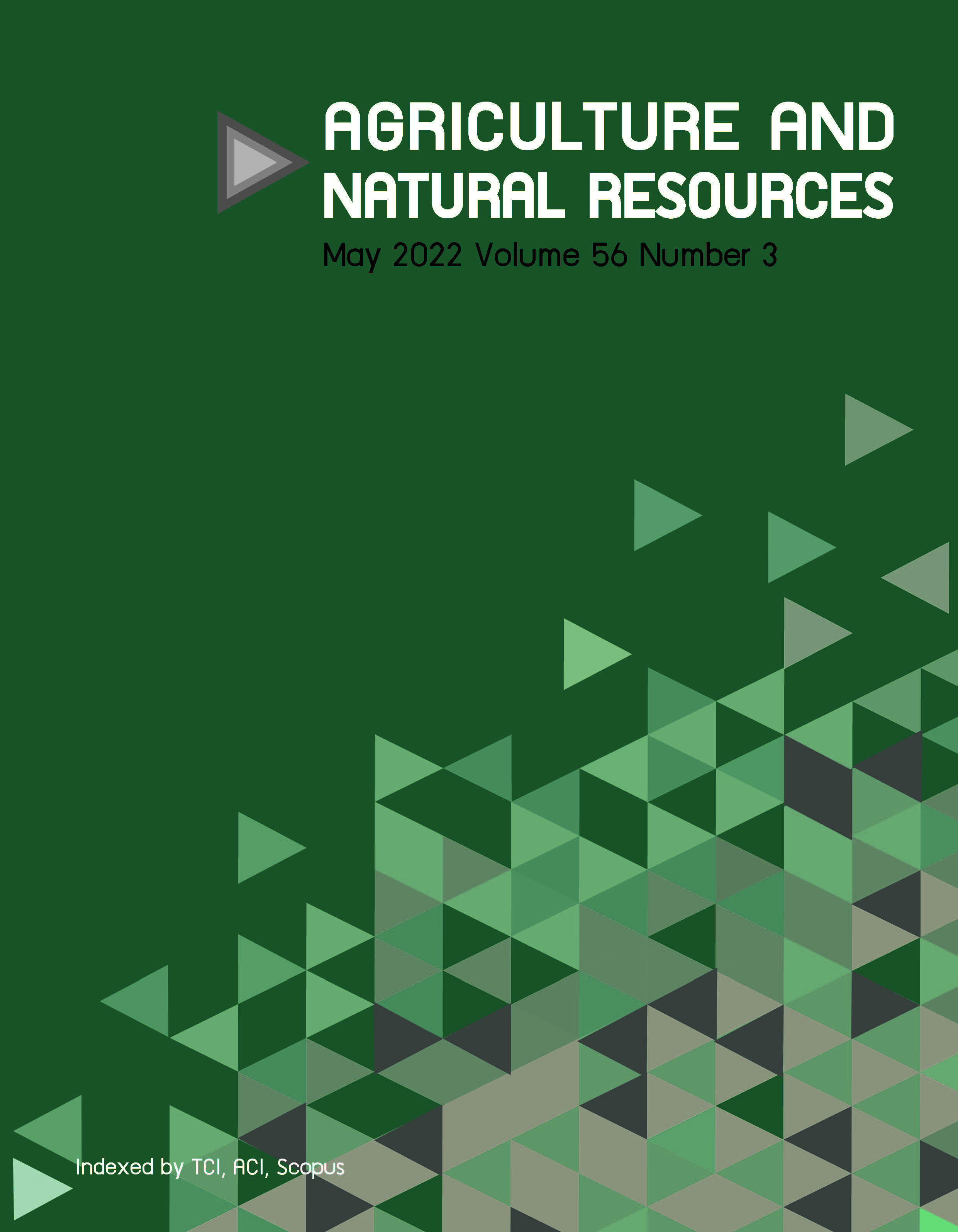Evaluation of diversity, population structure and core collection of Thailand Luffa cylindrica germplasm accessions
Keywords:
Core collection, Population structure, Single nucleotide polymorphisms (SNPs), Sponge gourdAbstract
Importance of the work: A Luffa cylindrica (sponge gourd) germplasm collection based in Thailand is vital for breeding programs to improve fruit quality and enhance the biotic and abiotic adaptive traits or commercial traits.
Objectives: To explore the population structure and diversity in the germplasm collection.
Materials & Methods: Germplasm consisting of 254 accessions was evaluated using 3,442 single nucleotide polymorphisms based on DArTSeq genotyping-by-sequencing technology.
Results: The collection was divided into two (K = 2) genetic subpopulations based on STRUCTURE analysis. The genetic differentiation between these two clusters (F statistic [FST] 0.076) and variance based on the analysis of molecular variance analysis (7.6%) revealed a low differentiation between the two subpopulations. These results corresponded with principal coordinates analysis and neighbor-joining analysis in which the accessions were weakly clustered. The total collection displayed moderate diversity (expected heterozygosity = 0.310 and observed heterozygosity = 0.267) accompanied by low inbreeding (inbreeding coefficient = 0.138, and global inbreeding coefficient = 0.205). A range of simulated core collections was generated for practical field evaluation and to reduce the cost of seed maintenance in the gene bank, from which 20% of the total accessions were considered ideal.
Main finding: The moderate-to-low diversity germplasm within the population will be useful for improving sponge gourd in Thailand. Increasing the diversity of sponge gourd germplasm in Thailand should be considered.
Downloads
Published
How to Cite
Issue
Section
License
Copyright (c) 2022 Kasetsart Universityonline 2452-316X print 2468-1458/Copyright © 2022. This is an open access article under the CC BY-NC-ND license (http://creativecommons.org/licenses/by-nc-nd/4.0/),
production and hosting by Kasetsart University of Research and Development Institute on behalf of Kasetsart University.







